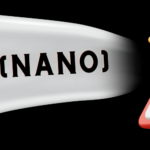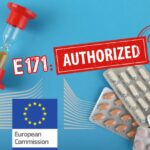
Risks associated with nano MBBT

By the AVICENN team – Last updated November 2020
Risks associated with nano MBBT
MBBT is insoluble and persistent / bioaccumulative.
In its opinions published in 2013 and 20151See :
– Opinion on 2,2′-Methylene-bis-(6-(2H-benzotriazol-2-yl)-4-(1,1,3,3-tetramethylbutyl)phenol), Scientific Committee on Consumer Safety (SCCS / CSSC), COLIPA No. S79, SCCS/1460/11, March 2013 (revised July 2013)
– Opinion on 2,2′-Methylene-bis-(6-(2H-benzotriazol-2-yl)-4-(1,1,3,3-tetramethylbutyl)phenol) (nano form), Submission III, SCCS, SCCS/1546/15, March 2015 (publication June 2015)., the European Scientific Committee on Consumer Safety (SCCS) supported the use of an uncoated form of MBBT as a UV filter in dermally applied products, mainly on the basis of a lack of dermal absorption as insoluble particles.
It has been permitted since 2018 at a concentration of 10% m/m, except for applications that may result in end-user lung exposure through inhalation of this substance.
However, due to the inflammatory effects by inhalation as well as a lack of clarity with respect to the potential genotoxicity/carcinogenicity and because some applications listed in the European catalog of nanomaterials used in cosmetics can lead to oral or inhalation exposure, MBBT nano was ranked as the highest risk nanomaterial in the cosmetic sector by the SCCS in October 20202Cf. Scientific advice on the safety of nanomaterials in cosmetics – Preliminary advice, Scientific Committee on Consumer Safety (SCCS / SCCS), 5 October 2020: Priority for Risk Potential (according to Brand et al., 2019): 34.
Any questions or comments? This information sheet compiled by AVICENN is intended to be completed and updated. Please feel free to contribute.
Upcoming Nano Agenda

- Scientific conference
- 23rd International conference on Advanced Nanomaterials
- From July 23 to July 25, 2025
- Website: www.advanced-nanomaterials-conference.com

- E-learning program: awareness-raising for personnel who come into contact with nanomaterials during research, formulation, production, maintenance, cleaning, upkeep, etc., as well as safety coordinators or engineers, facility managers, heads of laboratories where nanoparticles are handled.
- Organizers: INSTN Grenoble (CEA)
- On the program:
- 1 – Introduction, definition and characteristics of nanomaterials
- 2 – Toxicity of nanomaterials: the state of knowledge
- 3 – Metrology and characterization of nanomaterials
- 4 – Prevention and protection against nanomaterials in the workplace
- 5 – Quiz: assessment of learning outcomes
- The 2-hour course can be viewed for one month from the date of registration.
- Website: https://instn.cea.fr/…risques-lies-aux-nanomateriaux…

- 10th International Conference on Nanoscience and Technology
- Organized by: Chinese Academy of Sciences and Chinese National Center for Nanoscience and Technology
- Website: http://www.chinanano.org.cn/en/
File initially created in November 2020
Notes and references
- 1See :
– Opinion on 2,2′-Methylene-bis-(6-(2H-benzotriazol-2-yl)-4-(1,1,3,3-tetramethylbutyl)phenol), Scientific Committee on Consumer Safety (SCCS / CSSC), COLIPA No. S79, SCCS/1460/11, March 2013 (revised July 2013)
– Opinion on 2,2′-Methylene-bis-(6-(2H-benzotriazol-2-yl)-4-(1,1,3,3-tetramethylbutyl)phenol) (nano form), Submission III, SCCS, SCCS/1546/15, March 2015 (publication June 2015). - 2Cf. Scientific advice on the safety of nanomaterials in cosmetics – Preliminary advice, Scientific Committee on Consumer Safety (SCCS / SCCS), 5 October 2020: Priority for Risk Potential (according to Brand et al., 2019): 34







